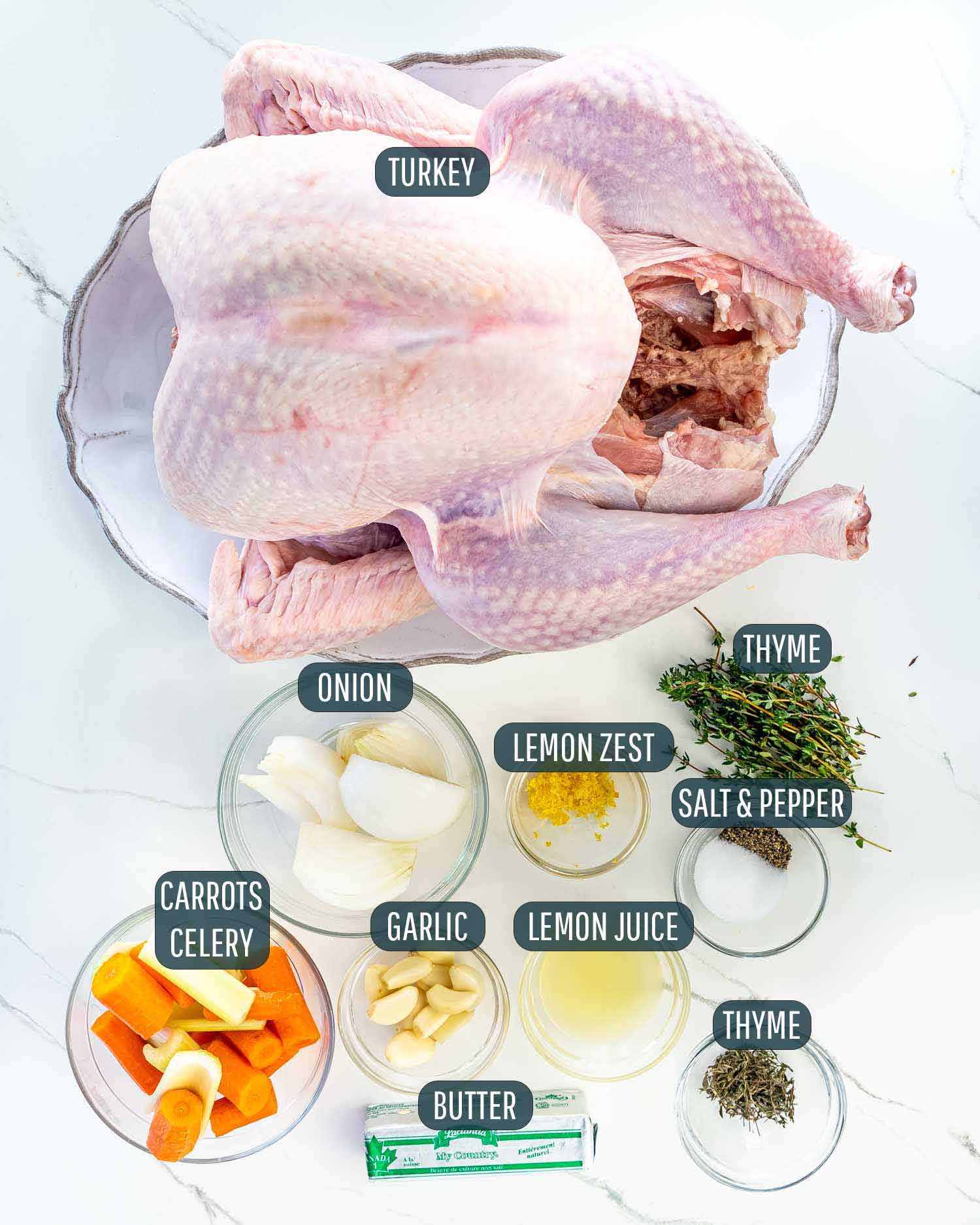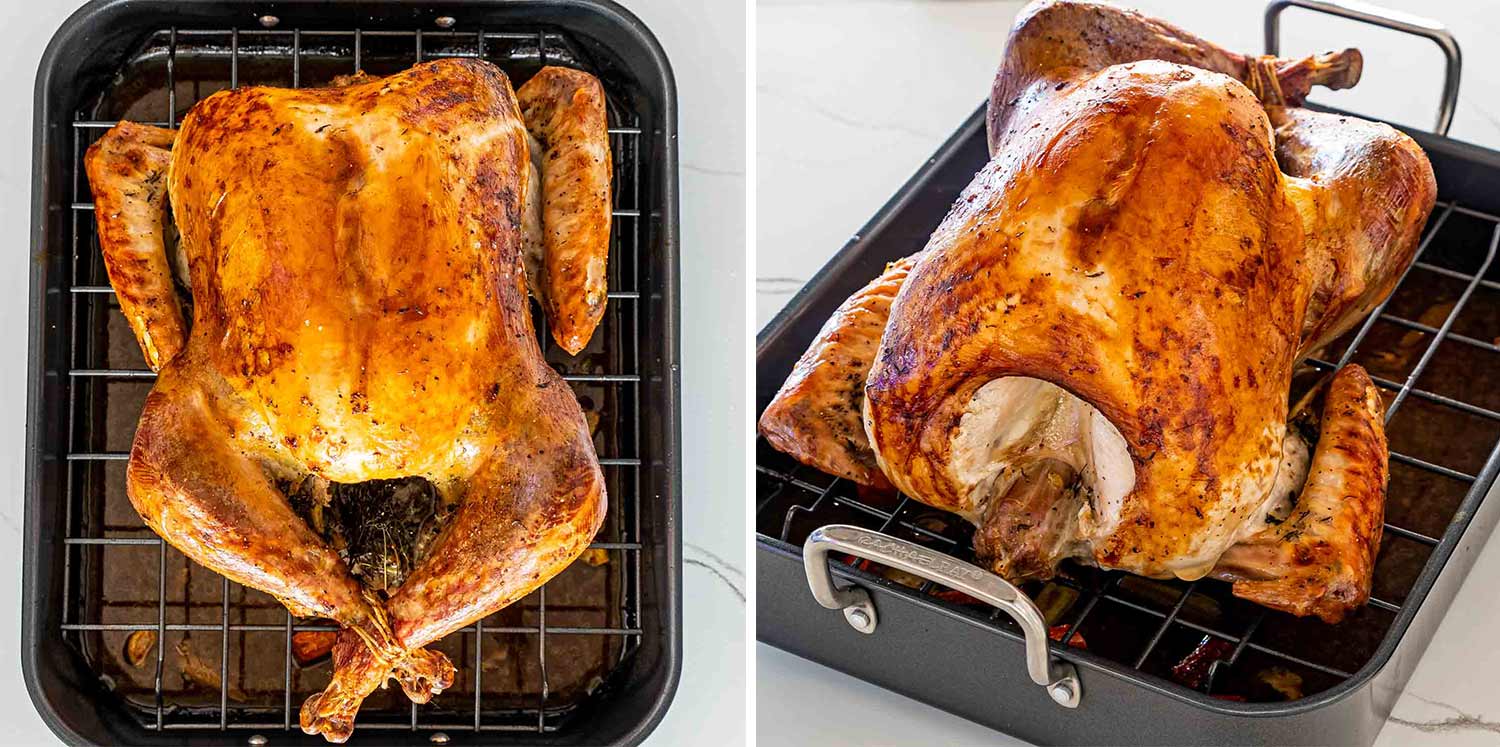How to Roast a Turkey – learn easy techniques to perfectly roast a turkey. Step by step instructions from start to finish.
Roasting a turkey can be an intimidating task Many home cooks worry about ending up with an overcooked, dry bird With the big meal riding on your turkey turning out juicy and delicious, covering it properly is a key step. But should you cover a turkey while it roasts and if so, what’s the best way to do it?
Why You Should Cover a Turkey
Covering your turkey serves an important purpose – it helps keep the meat moist. Turkeys need to roast for several hours to fully cook. Without any covering, the turkey’s skin would crisp up quickly from the dry oven heat while the inside remained underdone. Covering the turkey traps in steam so that the meat cooks gently and evenly, ensuring it turns out tender and flavorful.
The breast meat on a turkey cooks faster than the legs and thighs, Covering it prevents the white breast meat from drying out before the dark meat finishes cooking
Foil vs Roasting Pan With Lid
You have two good options for covering your roasting turkey:
- Tent loosely with aluminum foil
- Use a roasting pan with a tight-fitting lid
Both allow steam to build up inside so the turkey stays nice and juicy. Foil is more widely available and inexpensive. It’s easy to form a tent over your turkey on any type of roasting pan.
A lidded roasting pan braises the turkey a bit more since it fits snugly. This can yield even moister meat. However, not everyone has one of these specialty pans. Foil gets the job done just as well.
Partially vs Fully Covered
Some recipes advise only covering the turkey breast with foil since this lean meat dries out fastest. The legs and thighs are well protected by the skin and bone.
There’s no harm in loosely tenting foil over the entire turkey if you choose. Doing so provides more even cooking.
With a lidded roasting pan, cover the entire bird to seal in steam.
Crisping the Skin
Here’s where you need to uncover the turkey – during the last 30-60 minutes of roasting time. Removing the foil or lid allows the turkey skin to crisp up in the dry oven heat.
No one wants flabby skin, and this last stint uncovered gives you the chance to brown and crisp it to perfection.
Leaving it covered the entire time would definitely lead to a moist turkey, but with disappointingly soggy skin.
Additional Turkey Coverage Tips
- When using foil, make sure the tent is loose so air can still circulate and heat reaches the turkey.
- Cheesecloth soaked in butter and herbs can also be used to cover a turkey instead of foil.
- Always let the turkey rest about 30 minutes after roasting before carving. Keep it covered in foil during this time so juices redistribute.
- If deep frying or grilling your turkey, still let it rest covered in foil after cooking.
Covering your turkey while it roasts is crucial for ensuring mouthwateringly moist, tender meat. Just be sure to uncover in time for the skin to crisp up. Follow these tips for your best Thanksgiving turkey yet!
How To Thaw A Turkey
The safest and easiest way to thaw a turkey is in the refrigerator, but it takes the longest. It will take a few days, depending on the size of your turkey. All you have to do is put the turkey in a pan to catch any drips and leave it in the fridge for a few days. Allow 24 hours for every 5 pounds of turkey.
If you’re planning to brine the turkey, wet or dry, you can do this while the turkey is partially frozen.

- Turkey – I typically roast turkeys that are around 10 to 12 pounds.
- Butter – Used to add lovey richness and buttery goodness. But always use unsalted butter to control the amount of sodium.
- Lemon – Both the zest and juice of a fresh lemon are used to add a bit of acid which is super delicious in combination with the butter and garlic cloves.
- Thyme – Use fresh thyme for the best herby flavor. Feel free to use additional fresh herbs such as fresh rosemary, sage or even bay leaves.
- Salt – All turkeys must be seasoned well with salt to make them tasty.
- Black Pepper – Regular ground black pepper is perfect.
- Onion – Put in the cavity to help keep the turkey moist and add flavor.
- Celery And Carrots – I love to add some to the roasting pan to add flavor to my gravy.
- Garlic – Use freshly peeled cloves for the most garlicky good flavor.
Uncover And Finish Roasting

Continue roasting for an additional 1½ hours until the turkey turns golden brown and is fully cooked inside. You can baste it every 30 minutes if preferred. The turkey is done when the thigh meat reaches an internal temperature of 180°F and the breast reaches 165°F.
Do you cook a turkey covered or uncovered?
FAQ
Is it better to cook turkey covered or uncovered?
Do you cook a turkey covered or uncovered butterball?
Do you put water in the bottom of the roasting pan for turkey?
Should you cover or baste a turkey?
